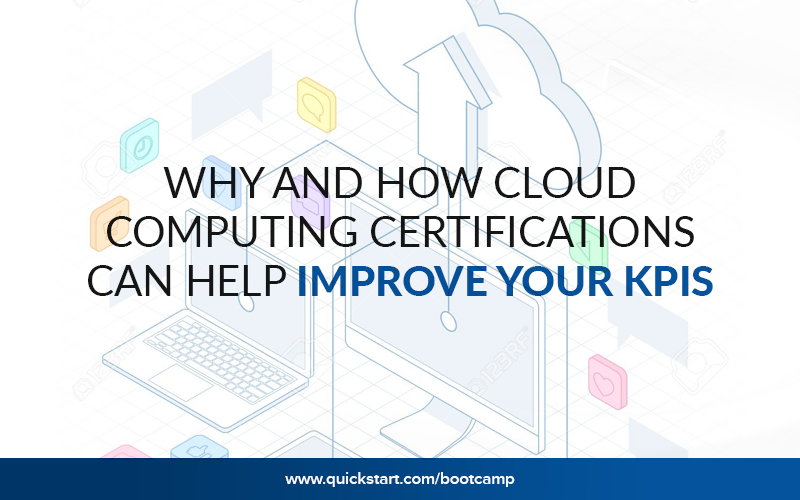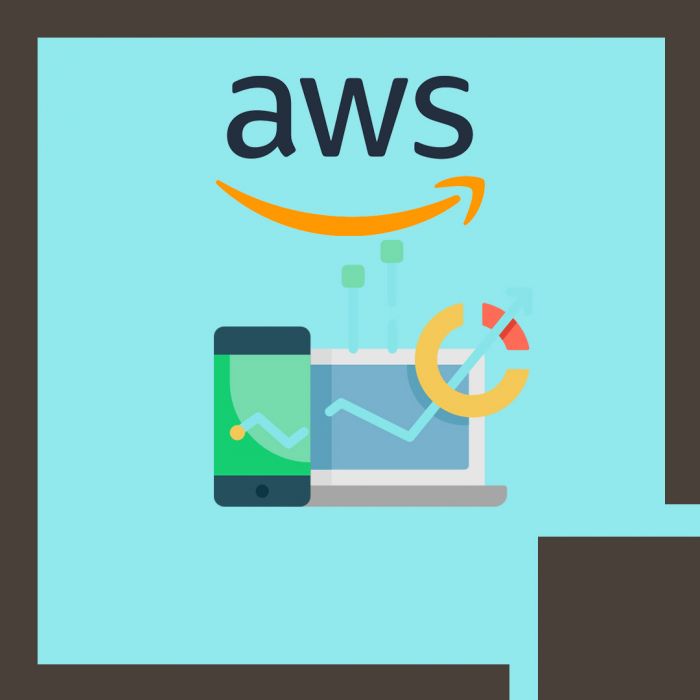
Why and How Cloud Computing Certification can help improve your KPIs
It is a fact that within a couple of years, Cloud as a field has evoked attention as well as investment from numerous domains. Nowadays, it is considered a crucial and critical aspect of the IT infrastructure for countless industries. Thus, field experts report that the Cloud data industry has developed promptly in past years. After a few initial concepts, Cloud computing is a self-sufficient way to provide resources for demand. Cloud computing now offers companies a convenient alternative to local hosting.
The main advantages of Cloud computing are cost reduction (thanks to the pay-per-use model), low cost of capital, and fast application of innovations. At the same time, the quality and reliability of the cloud service also serve as important factors. Therefore, service level agreement is the key to the efficient use of the Cloud. Customers need it to ensure risks and quality of service are transferred according to their requirements.
Cloud Computing Professionals Demand Is Constantly Growing
On the other hand, comprehensive cloud computing and certification, such as AWS training, is a big advantage. The number of Microsoft (Azure) Cloud jobs has grown over the years, and a survey of 120 Microsoft partners has shown that recruiters are trying to find qualified professionals to work in the Microsoft Azure field. The Azure Infrastructure Solutions certification gives you the skills you need to get a well-paid job in the field. As more companies realize the benefits of the cloud and DevOps methodology, demand for certified cloud computing professionals is growing.
Supports Credibility with Organizations and Peers
Cloud computing certification means you are qualified to help your organization reduce the risks and costs of implementing workloads and tasks on different cloud platforms. Similarly, it offers opportunities for Cloud-based projects, and your customers see you as a trusted content expert. The cloud for young people is widespread throughout the retail area, and companies have used Cloud computing to promote innovation in businesses. On the other hand, it improves and builds business relationships with customers and achieves operational efficiency like never before.
How do you think companies accurately measure the performance of the cloud and its impact on a business? What metrics are used to calculate profitability? What KPIs are used to monitor performance? These are the questions that executives and managers ask themselves when they implement Cloud technology in their business. It is mainly due to a lack of skills and inadequate information managers and employees have about the cloud. However, your employees need technical expertise and strategy, and if you are trained well in cloud technology, your business may be ready to dive into the world of Cloud computing.
It allows you to offer customers a great impact on business and a high return on investment. Before we get to the appropriate cloud training, and the KPIs you can use to measure your performance in those areas, let’s explore the success factors of cloud services to help your business make significant profits. Here are some good practices for companies that have already gone through the Cloud process:
- When organizations implement and increase the use of the cloud, it can be difficult for managers to ensure that end users have easy access to the information they need when they need it, regardless of the elements or physical location used. However, the most efficient use of the cloud includes resource management and a comprehensive, unified solution by defining cloud services and related application identifiers. Centralized monitoring of access to cloud services is required, with appropriate resources for each account.
- The success of cloud services is a result of the fact that they are available round the clock. Organizations that have achieved significant profitability with their cloud technology have SLAs with all of their partners and vendors they work with to ensure saving their own and the customer's time.
- Another good practice that industry leaders follow is to use mixed public-private cloud solutions. They all offer both support and services, effectively integrating the two to implement the best hybrid cloud strategy.
- In addition to integration, organizations that have successfully implemented the cloud have a common platform to manage all managed issues. It gives a thorough overview of all their systems and provides clear instructions on how the cloud can be used cost-effectively.
- The ability to anticipate, develop and publish cloud applications according to the market and consumer requirements is the key to increasing organization profitability and maintaining competition. This requires trained staff to improve and support the business and constantly provide new and improved cloud opportunities.
- Mobile capability is not just a proverb for organizations; it is an important ingredient that has helped them get the most out of their cloud operations. It provides a platform that develops creative freedom for the development, management, protection, and distribution of mobile applications in the Cloud.

AWS Certified Cloud Practitioner
On DemandThe fundamental-level course is intended for individuals who seek an overall understanding of the AWS Cloud, independent of specific technical roles.
Explore CourseCloud Computing Certification Helps Measure and Manage KPIs for Cloud Services Business
It is always critical to think about a company’s success and measure its achievement. It is especially important for companies and Managed Service Providers (MSPs) as they learn to work with the cloud. However, it might be easy to choose performance metrics if cloud computing is a usual business activity. MSPs often rely entirely on KPIs they have used in the past, independent of cloud-based metrics. When the cloud workforce is certified, they possess the technical knowledge of the areas that can be measured as key performance indices.
Of course, moving to the cloud is an important first step for any organization. But it goes so far if you still look at it from a project-based perspective. Be sure to use services based on KPI notes to succeed today, and that can only be possible when there are certified professionals leading the cloud migration projects. Cloud is also known to improve the overall performance of the hosting services. It is proven that a cloud platform has faster load times, faster network responses, and various other advantages over other options in the market. It works well with hardware settings and so offers a much better service experience with time. It can easily handle a large number of visitors without interference.
KPIs That Help MSPs Succeed in the Cloud
To measure an organization's success, it is always critical to keep track of things like total revenue, total orders, and cash flow. However, for software as a service, and especially for cloud companies, the following pointers are important indicators of profitability:
Monthly Recurring Earnings
It is the sum of all current subscription income in dollars per month. You need to measure your recurring earnings from month to month to find out if you have cloud bearings. Increasing the recurring earning can be as simple as selling services or some other basic service that your customers need.
Average Income
It is the revenue generated by each account, usually calculated monthly or annually. It is helpful to understand which products and services bring the most revenue. Knowing your services from it - will help you identify opportunities to increase the number of consumers.
Customer Churn
The customer rating is a useful KPI in almost any business environment but is especially important in the outsourcing world. On the other hand, it provides important information on how to meet customer needs. It can help customers move to the Cloud in a great number of ways. Investing in your employees also brings dividends because they advise and support your customers daily. However, a customer success manager helps you proactively identify problems so you can proactively reduce your company’s weight gain.
The Value of a User's Life Is Customer Cost-Based
This is one of the most important performance metrics. Firstly, compare the value of the revenue the customers have earned after getting services from you, with the resources your company needed to acquire them. The MSP could also consider hiring sales development representatives who will look for lower-cost opportunities from managers looking for the best talent.
Actions on Request
There is a long list of features that different cloud service providers offer for all the needs and requirements that the industry requires. However, a company may not need special features, and at some point, some features may be completely unnecessary to them. IT solutions providers can easily disable or enable new features by communicating over an email or a single call and may save additional costs. This also allows business owners the flexibility to acquire or lose a cloud feature as needed.
Measuring Availability and Profitability in the Cloud
This is a familiar image that Amazon Web Services uses and displays curves. This model describes the basic concept of permitted cloud-based services, offering dealings according to actual usage as needed. These are business metrics that help your employees and managers interpret certain metrics about their lifecycle capabilities and allow them to provide you with metrics that can, directly and indirectly, benefit your business, of course, through appropriate technology training in the Cloud.
- Promptness and speed of change - adoption changes or consequences and cost reductions are much faster in cloud technology. The cloud will be able to transform your cost structure by reducing the cost of delayed introduction of services via an accelerated transfer of new service capacities. The common goal is to improve business plans with small capital and urgency.
- The total cost of owner optimization - users can select, configure, design, and run programs and infrastructure according to their business needs. It is usually interrupted when IT projects are transferred to production departments. As far as Clouds are concerned, these environments are coming together.
- Fast delivery - Resources adjust to the company's needs, whether they grow, shrink, or correct.
- Cost management and revenue generation opportunities allow organizations to seek new markets and new customers to improve business services and growth.
- Powerful use service management and flexible communication are focused on the functional needs of the company and end-users. The range of services and consumers includes the search for new solutions.
- Linking and compensating for risk - common services could harness the power of computing in the cloud.
- Reduced bandwidths - avoid too much or provide IT services will improve smart business services.
- Successfully promote innovative skills and competencies - the cloud provides access to new solutions and skills with demand and cloud source solutions.
The above measurements are an extent of a company’s performance used to create score tables. However, they also show the current and future business needs of your potential cloud. On the other hand, with Cloud computing training and certifications, your team would be familiar with the development frameworks and tools for your business. They will also be able to assess the capabilities of cloud computing and focus on the competitive advantage, flexibility, and security it has to offer.
Acceptance of Cloud Computing Technology
The world is optimizing innovation through cloud computing. It far exceeds what its traditional counterparts offer. High-security authentication and accreditation, data encryption at standstill, hardware security modules, and better physical security contribute to a more secure way of managing your company’s IT areas. In light of this development, we can say a few more changes would be seen in the coming years, thanks to the Cloud pros and experts. Some of the key factors that help consumers understand the requirements of cloud computing are:
- A permanent internet connection is required to access the data.
- Although Cloud storage maintains the security of user data, it is still not a secure option for the financial sector, as valuable data is on the cloud too. This facilitates the misuse of your data.
- Not all service providers offer all the features. Some may require additional space and high bandwidth, making it an expensive option.
- With Cloud services, you leave the management of your data to third parties. It’s like blind trust. However, many manufacturers do not have internal controls that would lead to data leaks.
As Cloud computing offers well-recognized advantages, its acceptance is rapidly growing. Some of the key factors that have contributed to consumer acceptance of cloud technology include:
- Efficiency: It is one of the main benefits of the cloud for its users.
- Payment: Cloud service provider is paid a certain amount for the use of the service. It is also called the pay-as-you-go model.
- Data Access: Data can be accessed anytime, anywhere for work, the only requirement is the internet.
- With a Cloud service, the organization’s data is always secure. Even in the event of a disaster or technical problem, the data is still secure and stored for the future.
KPI for Measuring Cloud Optimization
The key to success at this stage is to motivate and encourage teams to follow best practices. Optimization is the process of finding ways to be more efficient and reduce costs or save time without sacrificing the features or resources needed to achieve broader business goals. While mature organizations may already have strong cloud cost optimization strategies (such as sizing, infrastructure removal, order management), optimization isn’t really an issue.
Active optimization involves finding faster and more efficient options for day-to-day tasks. Optimizing confidence issues is preventively monitoring and referring to the recovery of security and regulatory risks. The KPIs that your company should monitor to measure team-wide optimization and performance are:
- The share of demand for infrastructure is effective (based on order quantity, savings plan, reduction of consumer responsibility, etc.) (%)
- Return on savings (%)
- Actual cost per resource (USD / billing hour) (USD)
- Production events on request/team
- Use withdrawal (%)
- Average repair time or average time between failures (time)
- Number of security failures (open ports, IAM failures, etc.) (N)
- Number of units that do not meet the configuration standards (wrong type of VM, location, image, operating system, label) (n)
Why Are No Measures Made?
Collecting measurements in a constantly changing risk environment can be difficult, especially given the generally accepted lack of dimensions. Many companies with cloud programs do not collect statistics at all. Lack of metrics can be particularly problematic for SMEs, as they may not have the learning management system that some organizations use to collect data. The lack of metrics means that no real investment can be made, which can make managers reluctant to invest in an integrated Cloud program.
As random experiments further complicate documentation, this leads to a vicious circle of data shortages, leading to zero return on investment, insufficient capital, lack of structured applications, and so on. However, perhaps the biggest obstacle to collecting significant measurement data is the complexity of measurement operations. Does a Cloud program create more responsible employee behavior? Indicators that provoke employee participation in projects should monitor those that describe the progress made. The approach is easy to an extent; the measurement result is complicated.
How Does the Cloud Computing Work?
Properly implemented, virtual machines on the same computers are assembled and they do not communicate with each other. The files and applications on one virtual machine are not visible to the other virtual machines, even if they are on the same physical machine. Virtual machines also use more efficient hardware to support them. When you run multiple virtual machines at the same time, one server becomes multiple servers, and the data center becomes the number of data centers that can serve multiple organizations.
However, applications can be customized for different gears as required. On the other side of the coin, these features are designed to make the structure look like a Cloud, while storage, server, and switches are automatically set up and distributed. Thus, the use of inexpensive hardware will significantly become more popular in the coming years.
Upgrading and replacing the necessary IT components is more convenient because the entire infrastructure is divided into major components. However, cloud service providers typically support their services on many computers and in many regions. Consequently, users access the cloud services through a browser or application and connect to the cloud through the internet - or over multiple connected networks, regardless of the method they use.
Final Thoughts
An expert in the cloud can be better trained to explore new ways of cultivating critical thinking. However, a promising start to the day could begin with the development of a new administration and prominent research, websites, and discussion forums. For experts, there are zero boring days. They can be in assembly, attend meetings with local clients, help mitigate cloud migration challenges, write scripts, and follow new features through online pieces of training or surveys. Though, successful Cloud experts know how to tailor their proposals to the masses with almost zero technical information based on business goals and most concerns.
Additionally, Cloud experts can earn certifications in a recognized field, which supports the ability to design and deliver good architectural solutions that meet customer requirements. It is not as simple as we assume. However, innovative skills in Cloud computing is a way to secure the safety and integrity of data when reducing downtime. In the meanwhile, it is always good to expand your cloud expertise in various cloud platforms. Companies mostly hire experts who are aware of all the three major cloud platforms.
In case you are preparing to break into the space of Cloud-computing or just want to continue to grow your expertise and skills, there are plenty of free resources available. These resources would help you out take an initiative, like some Cloud training courses entirely free of cost. In case you are aware of where to perceive, open-source learning seems to be the best way is getting familiar with other kinds of Cloud service vendors.


